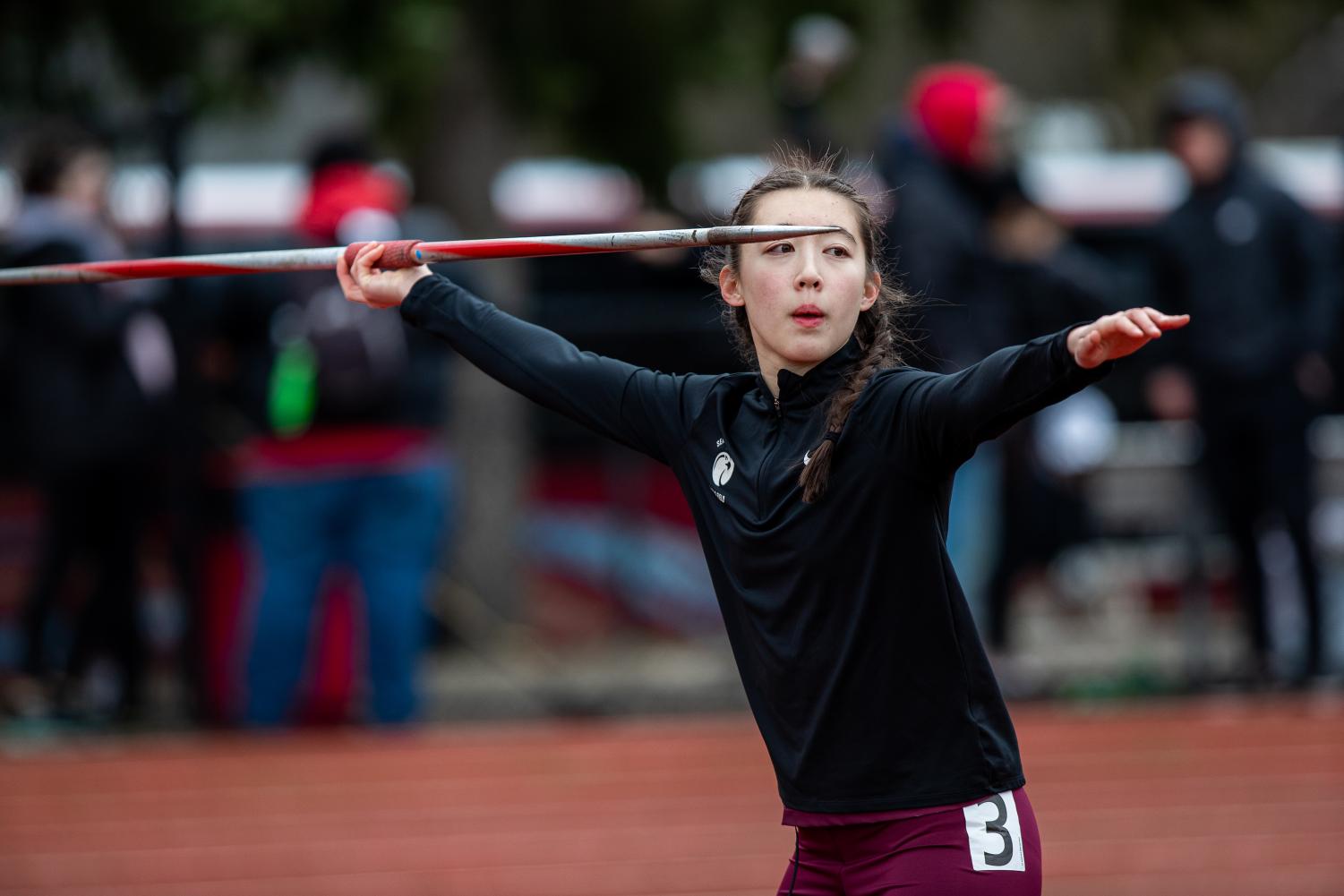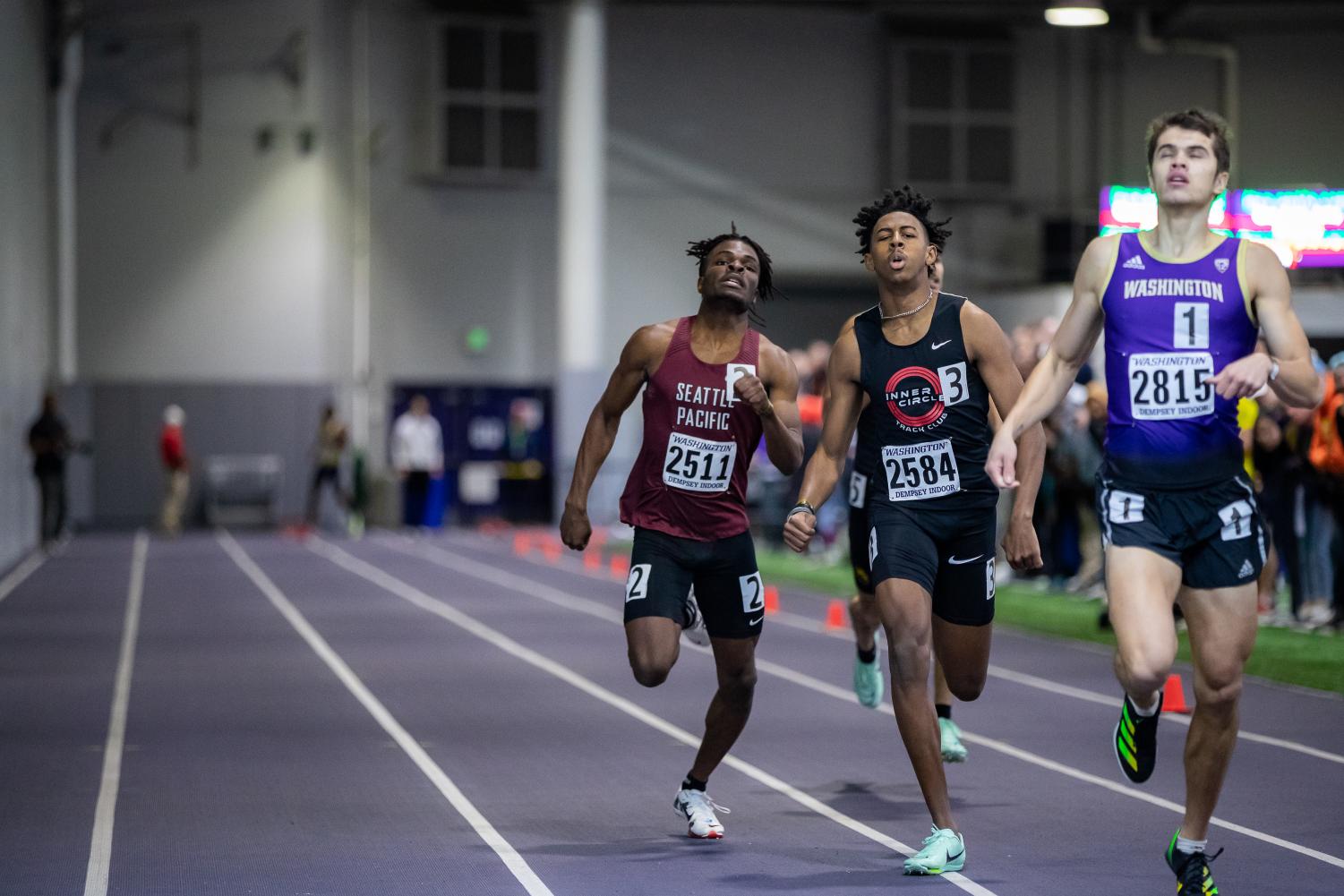Two seasons in one
Differences between indoor, outdoor track
April 4, 2023

Members of the Seattle Pacific University track and field teams are almost always multiple-sport athletes. At least, that is how the NCAA sees it. Collegiate track and field athletes compete in indoor and outdoor track and field. Although the two sports are extremely similar, they are considered separate. During March, when the indoor season ends and the outdoor season begins, these athletes have to make subtle yet important transitions to get ready to go from one sport to another.
But what are the differences between the two sports?
Track and field may be the oldest sport that remains in the modern lexicon. Human beings have been racing each other since the beginning of time, and organized running and throwing events have been documented as far back as the first Olympics in ancient Greece in 776 B.C. On Nov. 7, 1863, in the Kensington and Chelsea borough of London, the first indoor track meet was held, changing the sport of track and field forever.
Up until that point, track events were mostly a fair-weather affair. Now with the option of shifting the sporting festivities indoors, track and field became a year-long possibility.
It was not long before indoor track and field came to the United States. On Nov. 11, 1868, the first indoor track meet on American soil was held at the Empire City Ice Rink in the Lennox Hill neighborhood of New York City. Since that day, indoor track has become an extremely popular sport in the Northeast and Midwest regions of the United States and has reluctantly spread across the rest of the country.
“If you are in the Northeast, indoor track is a big area of emphasis because there are all kinds of great opportunities,” associate head coach of the Seattle Pacific University track and field team, Chris Reed, said. “Out here and in California, outdoor track takes a bigger emphasis …. If the West Coast was its own country we might not do much indoors.”
Reed explained that since indoor track is not nearly as popular on the West Coast as it is on the East Coast, there are fewer venues, meets and opportunities for competition. This is part of the reason why SPU looks at indoor track as more of a training ground for outdoor track, thus emphasizing it less.
“I think it is really hard physiologically for people to hit a peak three times a year,” Reed said. “To me, indoor and outdoor is kind of just one big giant season, and the indoor season provides an on-ramp to a really successful outdoor season.”
When Reed refers to words like “peaking” he is referring to a process most cardio-based athletes go through to get their bodies operating at peak condition for the right moment in the season. This process is extremely delicate and scientific, especially for distance runners who have to “peak” for both cross-country and track.
But distance running is not the only event in track and field that is affected by the transition from indoors to outdoors. Kainoa Lee is a junior pole vaulter for SPU. He explained how pole vaulting conditions can be completely different depending on the venues of competition.
“You are doing the same thing, but the conditions for each one are super different, especially being in the Pacific Northwest where there can be rain or there can be a lot of wind or super cold outdoors,” Lee explained. “Indoor doesn’t have that, so jumping indoors is a more consistent condition.”
Pole vaulters run on a runway before eventually throwing themselves in the air and over the bar. Lee explained that indoor tracks usually use raised runways, which are portable and firmer than the runways on outdoor tracks, usually made of softer rubber. Different vaulters may prefer the feel of either runway.
“The mental side of indoor and outdoor is probably one of the biggest things,” Lee said. “You can see changes in indoor and outdoor based on how people practice. Here we use a raised runway, when we go somewhere that is not a raised runway that can throw some things off when you are running as far as visual cues.”
Libby Michael, a senior distance runner on the track team said one of the biggest mental hurdles for her is how abrupt the transition from indoor track to outdoor track is. Since outdoor begins almost immediately after indoor, athletes will go from running high-adrenaline championship races one week to low-adrenaline, smaller, regular-season meets the next.
“I was at indoor conference championships preparing for the mile. They have a warmup area in the back and it just feels so intense, everyone is squished back there doing their [warm-ups], and it was so nerve-racking. The officials are yelling at you, and then we get to the first outdoor meet, and it was just a rainy day out on the track and I was like, ‘this is so casual,’” Michael said. “It just reminded me that we have a long ways to go.”

While similar sports, indoor and outdoor track and field are different beasts from both a mental and a training side. The fact that both exist is part of the beauty and quirkiness of the world’s oldest sport. Depending on which athlete or coach is doing the talking, there are different reasons why one sport is “superior” to the other. Take the three members of the SPU program featured in this article as an example.
“I think outdoors is fun because it’s finally warm out,” Michael said. “It’s so nice to just be at the track on a good day… that’s why I joined track, basically.”
“I like indoor,” Lee said. “It’s always something in the back of your mind as a vaulter, is it going to be rainy? Am I going to be able to jump today? Indoors, you don’t have to worry about any of that.”
“The season we’re in is the season I care about the most,” Reed said.



























































































